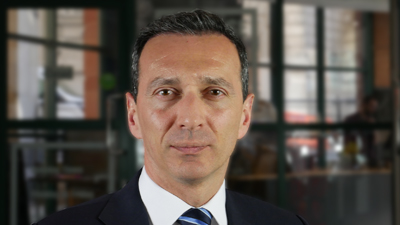The art and science behind a 20-year investment horizon
Super funds often talk about their long-term investment horizons. You have to wonder, though, given peer group pressure is real for the people who run the funds. Martin Currie Investment Management is asking investors to make a genuine commitment to this long-term view for its flagship global concentrated unconstrained equity fund.
The fund, which in Australia is also accessible to the wholesale market through parent company Legg Mason, and institutional strategy on which it is based, have recently clocked up a three-year track record, which putting them well ahead of a traditional index, such as the MSCI ACWI. While this an important milestone, the fund targets a 20-year horizon and the firm is loath to boast too much about a three-year number.
According to Zehrid Osmani, Martin Currie’s Edinburgh-based head of ‘Global Long-Term Unconstrained’, the question is “how do you take investors on a 20-year journey?”. He said on a trip to Australia mid-last month, that here are two important aspects to committing to such a horizon:
. You have to explain to them that you are managing their assets as if they were your own. A lot of them say: “We’d like you to be investors, not punters…. But, the whole thing is about behaving like business owners.”
. You also have to be very clear about what you are doing. The only reason they may become impatient is if you are doing something other than what you say. “We are growth investors. If there is a value or ‘junk’ rally, they should expect us to under-perform for a period.”
Kimon Kouryialas, the firm’s head of Pan Asia distribution, based in Melbourne, said: “You need to change the word ‘relationship’ to ‘partnership’. We look at how we can use the entire expertise, of the whole firm, to the benefit of the partnership. In a sense we are looking for super funds to change their view. These funds know they are growing and there is therefore a continuing search for alpha.”
He believes that the institutional investment industry in 20 years’ time will be “all bespoke – there won’t be any such thing as a standard offering”.
The notion of having true partnerships with external managers was pioneered in the US by the Teachers Retirement System of Texas which appointed five multi-asset managers, initially with a total of US$4.5 billion. In Australia, Sunsuper has followed a similar course with a chunk of its total portfolio. The Texas Teachers’ fund has a rigorous regime of meetings and presentations with each of these managers over the course of any year, including the presentation of thought-leadership papers and analyses of these by the internal investment professionals and consultants. It is certainly not a ‘set and forget’ attitude.
Martin Currie’s Osmani, who spent 10 years at BlackRock, including heading up European Equities and research, says there are three “mega themes” for the investment team to explore: demographic changes; the future of technology; and, resource scarcity.
“Even though they are evolving, in 10 years’ time we will still be talking about these mega themes,” he says. “Then there are subsets within each.”
An interesting example of a subset is what the investment team calls “vanity”. It is a part of the demographics theme, which includes increasing urbanisation and growing middle classes in places like China and India. “Vanity refers to the way people are spending their money,” Osmani says. “It includes growing demand for cosmetics, for instance, and even surgery.”
An ageing population in most western countries is another, as is, with increasing middle-class wealth, what is being called ’21st Century diseases’ such as diabetes, often caused by obesity, requiring treatment and demands for healthier lifestyles. “Investors should be thinking long and hard about these trends,” he says.
– G.B.
Note: Martin Currie is a sponsor of Investor Strategy News.










